One of the questions that we find when we reform a kitchen, is ¿How do I choose the best extractor hood for my kitchen? Where do I begin?
In addition to aesthetics, when we choose the hood for our new kitchen, we have to choose functionality and efficiency. Each kitchen has different needs. An open kitchen is not the same as a closed kitchen or an island kitchen or L-shaped kitchen. Each hood has its own space!
We tell you all the steps to choose the best hood for your kitchen
1. Previous steps: how is your kitchen?
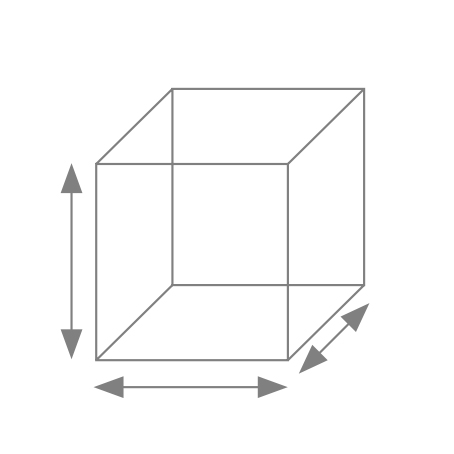
- Measure your kitchen (m3 of kitchen)
- Cooking area (wall, island, peninsula)
- Cooking type (Gas, Vitroceramic)
- Exit ducts to the outside (distance, diameter)
2. Suction system type
Hood with ducts to the outside or recirculation?
Hoods can expel the air from the room to the outside of the house through the roof or façade or clean the air and then return it to the room. This will determine where you can place it:
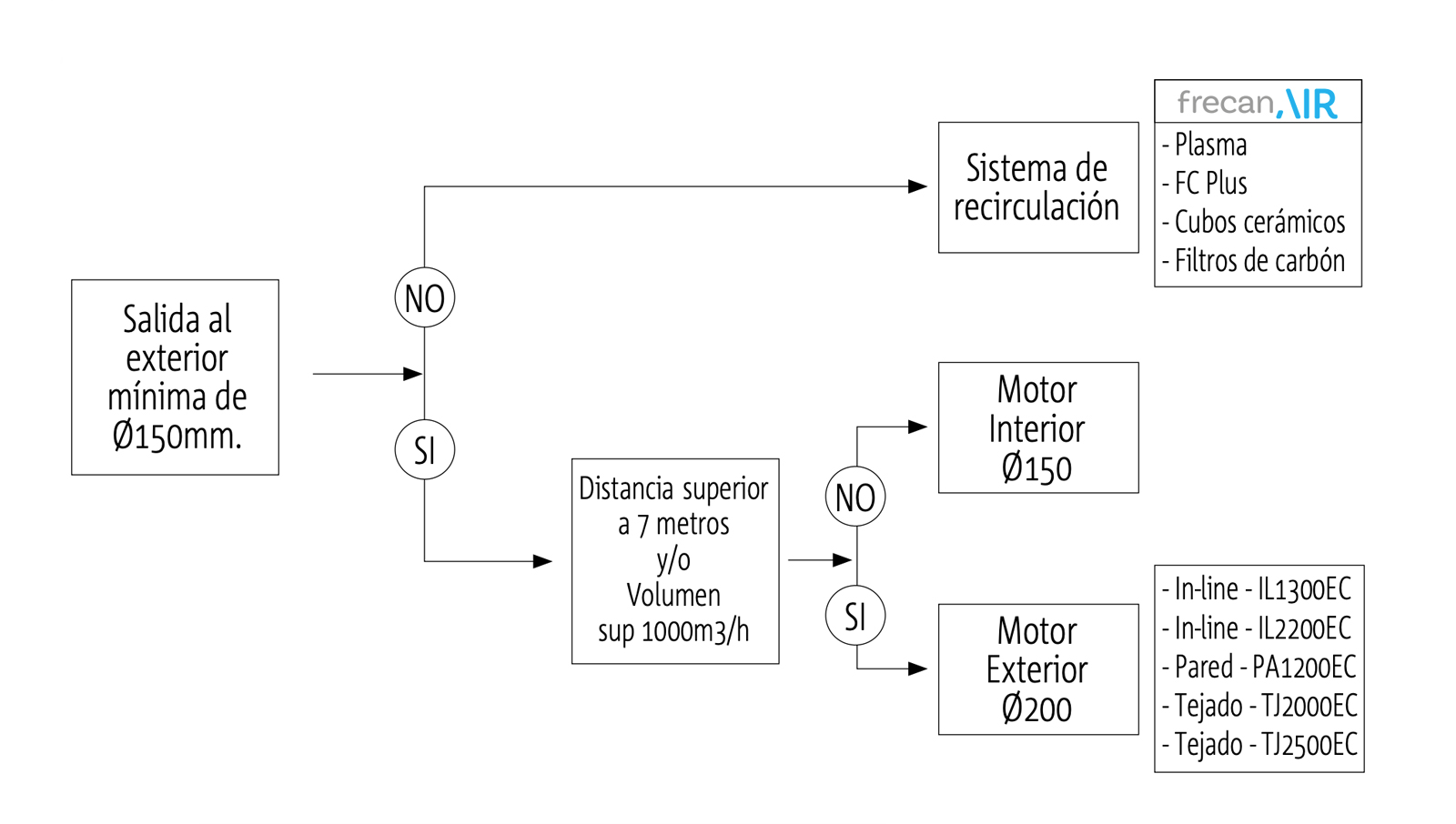
3. Calculate the vacuum capacity needed
Your kitchens volume assesses the suction capacity needed. To get a good air renewal it must be replaced about 10 times per hour. There is a simple formula for calculating the suction needs of a hood.

For instance, if the kitchen is 15 m² and 2.60 m high, the result would be: 15 x 2.60 x 10 = 390 m³.
Therefore, for a minimum suction you would need a hood of 390 m³ per hour of suction.
The ducts that carry the air outside create resistance to the air passage reducing the hoods suction capacity. So, it is recommended as much as possible to choose a hood with greater power to compensate this drop pressure. In case of open- plan kitchens these calculations may vary depending on the home’s layout. Inquire us and we will be pleased to advise you.
4. Sound level
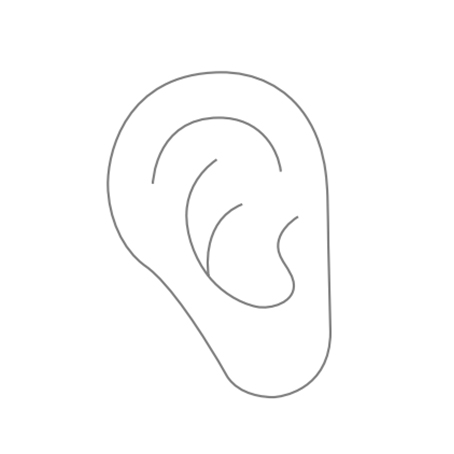
The sound level increases depending on the vacuum power by the air friction in the inner part of the hood as well as in its way to outwards. A good installation ensures a proper airflow, and the engine works smoothly.
Frecan submits all its models to the strictest controls scrupulously complying with European regulations EN 61591, EN 50564, EN 60704-3 and EN 60704-13 in terms of regulation of sound pressure levels and consumption. All of these, thanks to our own certified laboratory. Publishing the pressure and sound power data duly identified to not to confuse our users
5. Dimensions and hood position
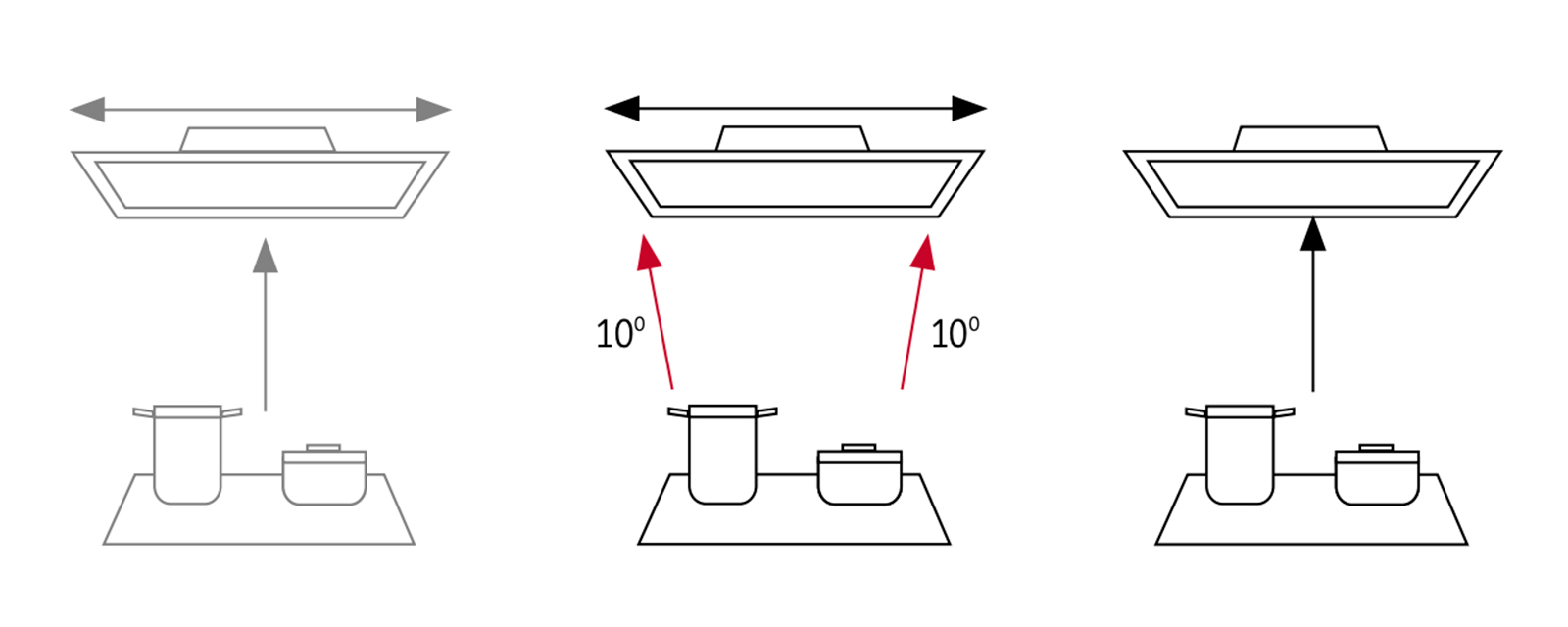
When rising, the steam expands approximately a 10º angle. Therefore, and the reason we recommend a larger size of the hood compered with on the plate. It is always recommended.
*This size difference should be calculated based on the installation distance.
This guidance is indicative since it differs according to the type of cuisine. The installation distance directly affects the extraction capacity of the hood and its condensation. Follow these instructions to ensure the proper performance of your hood.
Distance from the hob to the hood
- Wall / Island 60-70 cm far from the vacuum area
- Integration: Maximum 70 cm from the vacuum area
- Ceiling: between 140 and 160 cm from the vacuum area
According to the UNE-60335-2-31 standard rule, the minimum distance of the gas plates from the active parts of the extractor hood and/or furniture must be at least 65 cm.
6. Follow the installation tips
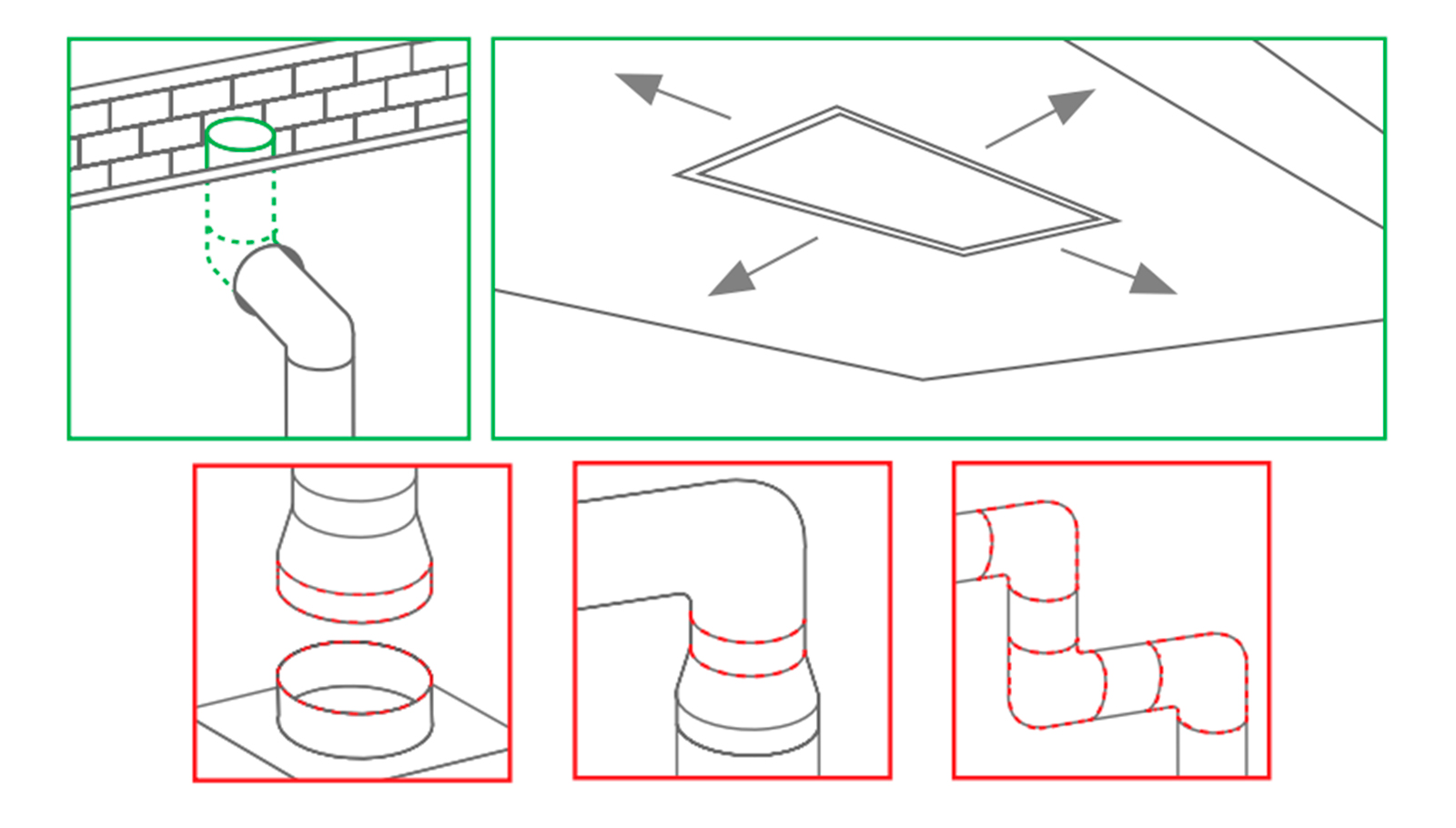
Most of the vacuum and noise reduction efficiency depends on the path and output length abroad, for this reason we indicate some advice so that your satisfaction is maxim
- Ensure that the smoke outlet is as direct as possible (respect the Ø150mm outdoors).
- Avoid tube reductions especially at the engine outlet or before an elbow.
- Avoid the number of elbows as much as possible. And if unavoidable, avoid elbows of 90°.
- On the ceiling hoods installation processes, being not possible to have a ceiling at the same level, it is necessary to leave at least 0.5 meters on each side of the hood to ensure that the fumes do not raise to a higher level of the hood, making the vacuum more complicated.
Discover more installation FAQ
Have you ever wondered, why is hood dripping water? How to Stop Condensation in a cooker hood?

Comentar